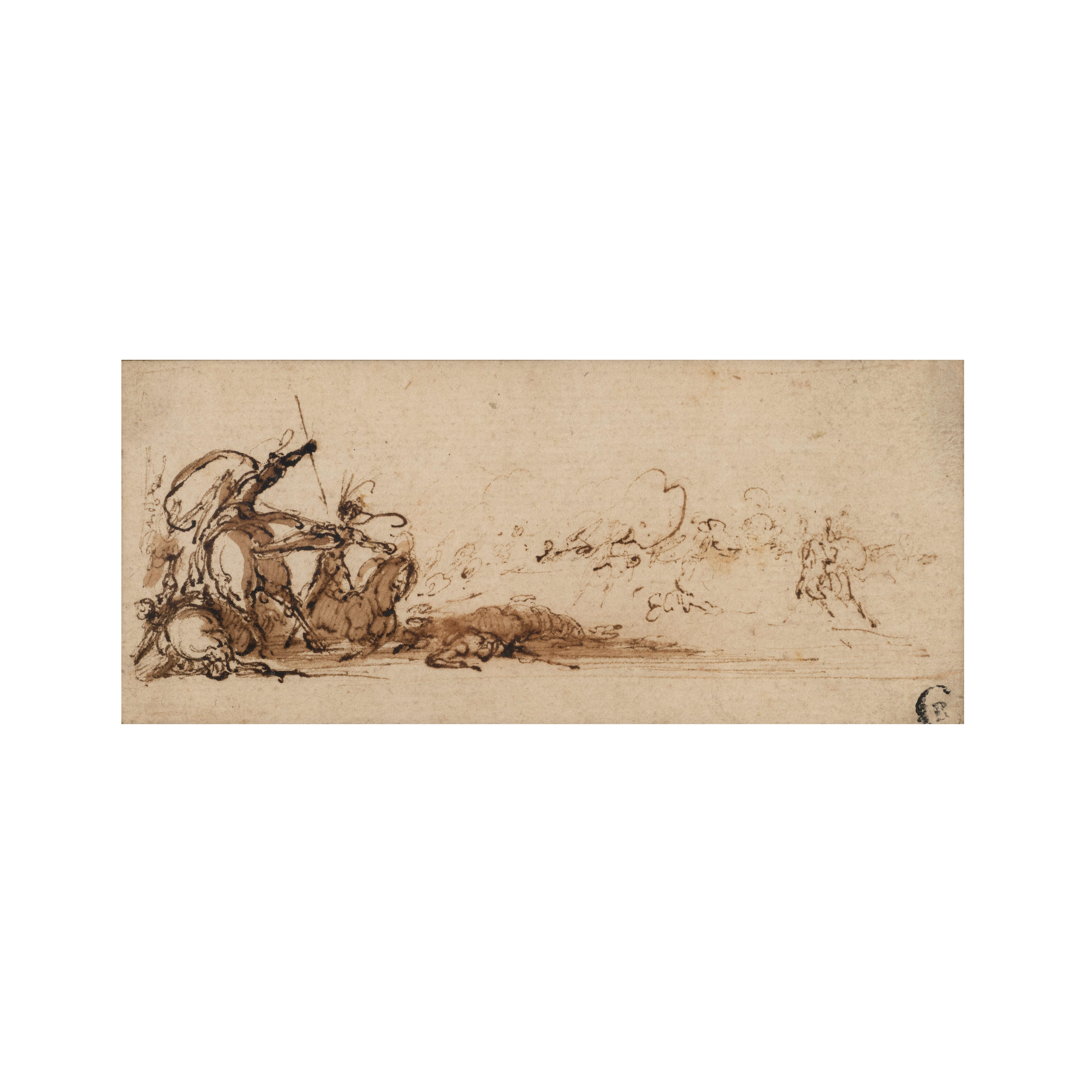Jacques CALLOT (French engraver, born Nancy 1592 – died Nancy 1635) “L’Enfant Prodigue, (L1404)” The full set of set of eleven Engravings, second state, some trimmed on or inside the platemarks, 6.2 x 8 cm. (various similar sizes) (unframed) Artist information: Jacques Callot was a baroque printmaker and draftsman from the Duchy of Lorraine (an independent state on the north-eastern border of France, southwestern border of Germany and overlapping the southern Netherlands). He was an important person in the development of the old master print. Callot made more than 1,400 etchings that chronicled the life of his period, featuring soldiers, clowns, drunkards, Gypsies, beggars, as well as court life. He also etched many religious and military images, and many prints featured extensive landscapes in their background. During his period in Florence, he became an independent master, and worked often for the Medici court. After the death of Cosimo II de’ Medici during 1621, he returned to Nancy where he lived for the rest of his life, visiting Paris and the Netherlands later during the decade. He was commissioned by the courts of Lorraine, France and Spain, and by publishers, mostly in Paris. Although he remained in Nancy, his prints were distributed widely through Europe; Rembrandt was a keen collector of them.
Jacques CALLOT (French engraver, born Nancy 1592 – died Nancy 1635) “L’Enfant Prodigue, (L1404)” The full set of set of eleven Engravings, second state, some trimmed on or inside the platemarks, 6.2 x 8 cm. (various similar sizes) (unframed) Artist information: Jacques Callot was a baroque printmaker and draftsman from the Duchy of Lorraine (an independent state on the north-eastern border of France, southwestern border of Germany and overlapping the southern Netherlands). He was an important person in the development of the old master print. Callot made more than 1,400 etchings that chronicled the life of his period, featuring soldiers, clowns, drunkards, Gypsies, beggars, as well as court life. He also etched many religious and military images, and many prints featured extensive landscapes in their background. During his period in Florence, he became an independent master, and worked often for the Medici court. After the death of Cosimo II de’ Medici during 1621, he returned to Nancy where he lived for the rest of his life, visiting Paris and the Netherlands later during the decade. He was commissioned by the courts of Lorraine, France and Spain, and by publishers, mostly in Paris. Although he remained in Nancy, his prints were distributed widely through Europe; Rembrandt was a keen collector of them.
.jpg)





.jpg)








Testen Sie LotSearch und seine Premium-Features 7 Tage - ohne Kosten!
Lassen Sie sich automatisch über neue Objekte in kommenden Auktionen benachrichtigen.
Suchauftrag anlegen